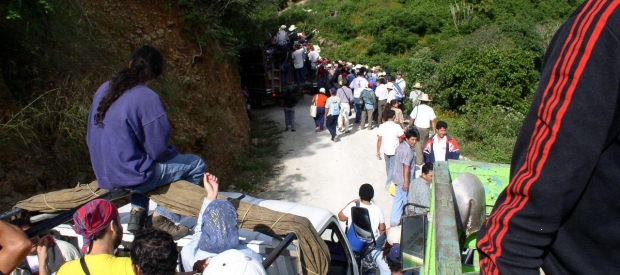Mesoamerica
Hundreds of large dams are being planned, with very little transparency, threatening to destroy the rivers of Central America and Mexico, along with the economies of communities that rely on these rivers for their livelihood. The dams would impact fish stocks and coastal ecosystems, wetlands and mangroves that contain many plant and animal species, some still undiscovered.
The Mesoamerica Plan, previously called the Puebla-Panama Plan, is a massive infrastructural plan for the region, which includes plans to interconnect the power systems of the region, fueled mostly by hydropower. The regional energy system will connect the power systems of Central America to North America. Funding for the system and the Mesoamerica Plan comes from several sources, including the Inter-American Development Bank and the Central American Bank for Economic Integration.
A growing civil society movement questions the Mesoamerica Plan, trade agreements and the building of more large dams in the region. Communities are concerned about the systematic exclusion of rural populations in the decision-making process, and the profound impacts on communities, ecosystems and local economies.
In 2003 hundreds of communities affected by dams created the Mesoamerican Movement of People Affected by Dams, for Rivers and Life, in Guatemala. There have been five Mesoamerican forums on dams. The most recent one was held in Costa Rica in 2011. These forums help to strengthen the movement in the region. The consolidation of national networks of people affected by dams and its allies is taking place across the region. Such networks include the Mexican Movement of Peoples Affected by Dams and in Defense of Rivers (MAPDER) and the Guatemalan National Front against Dams.
In Mexico, International Rivers supports communities that would be affected by the Parota Dam on the Papagayo River in Guerrero state. The Parota Dam threatens to displace 25 000 people and affect the livelihood of another 75 thousand people. The Federal Electricity Commission (CFE) of Mexico is promoting the adoption of the project without following mandatory procedures regarding consultation with affected communities. International Rivers works with affected communities to draw attention to the illegal process of project development, and support their struggle to stop the project.
In Guatemala, International Rivers has been working with communities affected by the Chixoy Dam and NGOs that support them, to demand reparations from the Guatemalan Government, World Bank and Inter-American Development Bank for damages caused by the dam.



